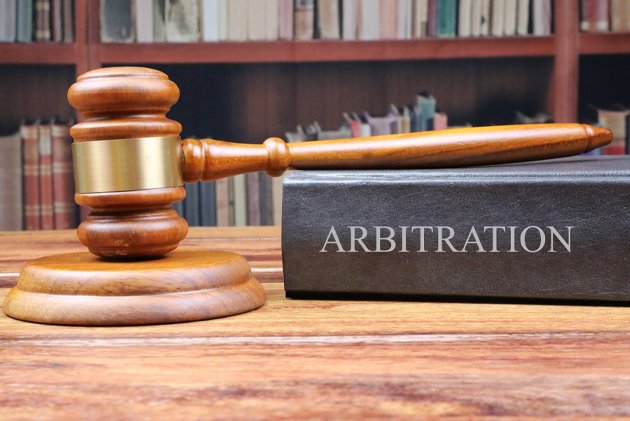October 10, 2025

Landmark Judgments by the Hon’ble Supreme Court of India on Labour Laws
The Supreme Court of India has played a pivotal role in shaping the landscape of labour law jurisprudence in India. Through numerous landmark judgments, the Court has interpreted various labour legislations, defined concepts, and established principles that continue to guide industrial relations and protect workers' rights. The following is a comprehensive examination of the most significant judicial pronouncements in this field:
Definition of 'Industry' and Scope of Industrial Law
1. Bangalore Water Supply & Sewerage Board v. A. Rajappa, (1978) 2 SCC 213
This watershed judgment delivered by a seven-judge bench led by Justice V.R. Krishna Iyer substantially expanded the scope of the term 'industry' under the Industrial Disputes Act, 1947. The Court established the famous 'Triple Test' to determine whether an establishment qualifies as an industry:
- Systematic activity organized by cooperation between employer and employee
- Production and/or distribution of goods and services to satisfy human wants and wishes
- The existence of an employer-employee relationship
This judgment brought numerous establishments like hospitals, educational institutions, clubs, and even government departments within the ambit of 'industry', thus extending the protections of industrial law to a much wider section of the workforce. This definition prevailed until specific amendments to the Industrial Disputes Act were made, though those amendments have not been brought into force.
2. State of Bombay v. Hospital Mazdoor Sabha, AIR 1960 SC 610
This judgment, which preceded Bangalore Water Supply, was one of the early cases that expanded the definition of 'industry' by including hospitals within its scope. The Court held that charitable activities or service-oriented institutions could be industries if they involved systematic activities with employer-employee relationships. This case laid the foundation for the more expansive interpretation later adopted in Bangalore Water Supply.
Industrial Disputes and Collective Bargaining
3. Central Provinces Transport Service v. Raghunath Gopal Patwardhan, AIR 1957 SC 104
This landmark judgment clarified the distinction between an individual dispute and an industrial dispute under the Industrial Disputes Act. The Court held that an individual dispute could transform into an industrial dispute if it was taken up by a significant number of workmen or a union. This ruling was crucial in extending the protection of the Industrial Disputes Act to individual workers whose grievances receive collective support.
4. Standard Vacuum Refining Company v. Their Workmen, AIR 1961 SC 895
In this case, the Supreme Court established important principles governing the adjudication of industrial disputes. The Court laid down guidelines for interpreting collective bargaining agreements and emphasized that when resolving disputes, industrial tribunals should consider not only legal rights but also principles of social justice and equity. This judgment significantly influenced subsequent adjudication of industrial disputes.
Right to Strike and Lockout
5. Syndicate Bank v. K. Umesh Nayak, (1994) 5 SCC 572
This judgment examined the legality of strikes and recognized that while the right to strike is not a fundamental right, it is a legal right available to workers as a mode of redress. However, the Court also emphasized that this right is subject to statutory restrictions under the Industrial Disputes Act and other labor legislations. The judgment balanced workers' right to strike against larger public interest considerations.
6. T.K. Rangarajan v. Government of Tamil Nadu, (2003) 6 SCC 581
The Court made the significant observation that government employees have no fundamental, statutory, or equitable right to go on strike. This controversial judgment restricted the right of public servants to use strikes as a bargaining tool, highlighting the principle that essential public services should not be disrupted.
Retrenchment, Closure, and Job Security
7. Excel Wear v. Union of India, (1979) 1 SCC 230
This landmark judgment examined the constitutional validity of Section 25-O of the Industrial Disputes Act, which required prior permission from the government before closing down an undertaking. The Hon’ble Supreme Court struck down the provision as unconstitutional, holding that it violated employers' fundamental right to carry on business under Article 19(1)(g) of the Constitution. The Court recognized the right to close down a business, while acknowledging that this right could be reasonably regulated but not completely taken away.
8. Workmen of Meenakshi Mills v. Meenakshi Mills, (1994) 2 SCC 422
In contrast to Excel Wear, this judgment upheld the validity of retrenchment provisions under the Industrial Disputes Act. The Court held that provisions requiring prior notice, compensation, and following the 'last come, first go' rule for retrenchment were reasonable restrictions on the employer's right to retrench workers and did not violate Article 19(1)(g) of the Constitution. This judgment reflected the judiciary's approach to balancing workers' job security with employers' business interests.
9. Workmen of Subong Tea Estate v. Subong Tea Estate, (1964) 1 LLJ 333
The Hon’ble Court held that retrenchment means the termination of service of a workman for any reason whatsoever, except those specifically excluded in the definition under Section 2(oo) of the Act. This broad interpretation enhanced protection for workers against arbitrary termination.
Contract Labor
10. Steel Authority of India Ltd. v. National Union Waterfront Workers, (2001) 7 SCC 1
This landmark judgment by a five-judge Constitution Bench substantially impacted contract labor law in India. The Court held that automatic absorption of contract workers was not a necessary consequence of prohibition of contract labor under Section 10 of the Contract Labour (Regulation and Abolition) Act, 1970. The judgment clarified that while the appropriate government could prohibit contract labor in specific operations, this did not automatically create rights of absorption for the affected workers unless specifically provided for.
11. Secretary, Haryana State Electricity Board v. Suresh, (1999) 3 SCC 601
This judgment emphasized that the Contract Labour Act is a beneficial piece of legislation that deserves liberal interpretation to fully achieve its objectives. The Court recognized that contract labor is often exploited and that the Act was designed to ameliorate poor working conditions. The judgment reinforced the principle that courts should prioritize the welfare of contract workers when interpreting labor statutes.
12. Air India Statutory Corporation v. United Labour Union, (1997) 9 SCC 377
Before being overruled by the SAIL judgment [(2001) 7 SCC 1], this ruling had established that contract workers were entitled to automatic absorption when contract labor was abolished in particular operations. The judgment had significantly strengthened the position of contract workers by ensuring job security after prohibition of contract labor.
13. ONGC Labour Union v. ONGC Dehradun & Ors., 2019 INSC 1154 (relevant for its ongoing impact)
Though decided in 2019, this judgment continues to significantly impact contract labor jurisprudence in the 2020s. The case involved a challenge to the quashing of a notification issued by the Government of India under Section 10(1) of the Contract Labour (Regulation and Abolition) Act, 1970, which had prohibited the employment of contract labor in certain categories of work at ONGC.
The Supreme Court upheld the principles established in Steel Authority of India Ltd. v. National Union Waterfront Workers (2001), confirming that prohibition of contract labor under Section 10 of the CLRA Act does not automatically lead to the absorption or regularization of contract workers as direct employees of the principal employer.
This judgment remains significant in the context of the new labor codes, particularly the Occupational Safety, Health and Working Conditions Code, 2020, which contains provisions on contract labor. It continues to guide tribunals and courts in addressing disputes concerning the abolition of contract labor and subsequent claims for regularization.
Unfair Labor Practices
14. S.G. Chemical and Dyes Trading Employees' Union v. S.G. Chemicals and Dyes Trading Ltd., (1986) 2 SCC 624
This judgment addressed unfair labor practices in the context of closure of an establishment. The Court held that the closure was illegal and the termination of employees constituted an unfair labor practice. The judgment reinforced protections against attempts by employers to use closure as a means to circumvent labor laws and terminate workers without proper justification.
15. Glaxo Laboratories v. Presiding Officer, Labour Court, Meerut, (1984) 1 SCC 1
In this the Hon’ble Court emphasized that disciplinary actions must follow principles of natural justice and that violation of these principles could constitute unfair labor practices. The judgment enhanced procedural safeguards for workers facing disciplinary action.
Equal Pay for Equal Work
16. Randhir Singh v. Union of India, (1982) 1 SCC 618
In this groundbreaking judgment, the Hon’ble Supreme Court elevated the principle of "equal pay for equal work" to a constitutional principle derived from Articles 14, 16, and 39(d) of the Indian Constitution. The Hon’ble Court held that persons doing similar work cannot be treated differently in matters of pay scales. This judgment set the foundation for numerous subsequent cases on wage parity.
17. State of Madhya Pradesh v. Pramod Bhartiya, (1993) 1 SCC 539
This judgment further developed the principle of equal pay for equal work by clarifying that equality in pay must be determined based on equality in functions, duties, and responsibilities. The Court emphasized that mere similarity in designation or job title was insufficient to claim equal pay and that a comprehensive evaluation of the job content was necessary.
Social Security and Welfare Benefits
18. Regional Director, ESI Corporation v. Francis De Costa, (1993) Supp 4 SCC 100
The Hon’ble Court held that the Employees' State Insurance Act, being a social welfare legislation, should be interpreted liberally to extend benefits to as many workers as possible.
19. Workmen of Reptakos Brett v. Management, (1992) 1 SCC 290
In this significant judgment on minimum wages, the Hon’ble Supreme Court held that minimum wages should include not just bare subsistence needs but also provisions for education, medical requirements, and amenities.
20. Chairman and Managing Director, The Fertilizers and Chemicals Travancore Ltd. & Anr. v. General Secretary FACT Employees Association & Ors., 2019 INSC 514 (continuing relevance)
This judgment, though delivered in 2019, continues to be influential in shaping the approach to industrial disputes in the context of employee benefits and service conditions during the 2020s. The case involved a dispute regarding reduction of retirement age from 60 to 58 years in a public sector undertaking.
The Supreme Court held that once an issue related to service conditions has been adjudicated on its merits between the parties, it attains finality, and no judicial forum has jurisdiction to retry those issues again, applying the principle of res judicata to labor proceedings.
Sexual Harassment at Workplace
21. Vishaka v. State of Rajasthan, (1997) 6 SCC 241
Though not strictly a labor law case, this watershed judgment had profound implications for workplace norms. In the absence of specific legislation, the Court laid down detailed guidelines to prevent sexual harassment of women at workplaces, making it mandatory for employers to establish grievance redressal mechanisms. These guidelines, known as the Vishaka Guidelines, operated as law until the enactment of the Sexual Harassment of Women at Workplace (Prevention, Prohibition and Redressal) Act, 2013.
22. Apparel Export Promotion Council v. A.K. Chopra, (1999) 1 SCC 759
This judgment further developed the jurisprudence on sexual harassment at the workplace. The Court clarified that sexual harassment need not involve physical contact and could include other forms of unwelcome sexually determined behavior.
Gender Discrimination
23. Air India v. Nargesh Meerza, (1981) 4 SCC 335
This judgment addressed gender discrimination in employment conditions. The case involved discriminatory service conditions for female air hostesses compared to male flight pursers, including provisions for termination upon pregnancy or marriage. The Court struck down some of these discriminatory provisions while upholding others, marking an important if imperfect step toward gender equality in employment.
24. C.B. Muthamma v. Union of India, (1979) 4 SCC 260
This judgment challenged discriminatory rules in the Indian Foreign Service that required women officers to obtain permission before marriage and to resign if the government determined that family obligations interfered with their duties. The Court found these rules to be discriminatory and violative of constitutional guarantees of equality.
Constitutional Labour Rights
25. PUDR v. Union of India, (1982) 3 SCC 235
In this landmark case, also known as the Asiad Workers' case, the Supreme Court expanded the scope of Article 23 of the Constitution (which prohibits forced labor) to include payment of less than minimum wages. The Court held that any work done for less than minimum wage would amount to forced labor. This judgment significantly enhanced constitutional protections for workers, especially those in the unorganized sector.
26. M.C. Mehta v. State of Tamil Nadu, (1996) 6 SCC 756
This landmark judgment dealt with the issue of child labor. The Hon’ble Supreme Court issued detailed guidelines for eliminating child labor and for the rehabilitation and welfare of working children. The Court directed the establishment of a Child Labor Rehabilitation-cum-Welfare Fund and ordered payment of compensation by employers found using child labor.
Fixed-Term Employment and Maternity Benefits
27. Dr. Kavita Yadav v. The Secretary, Ministry of Health and Family Welfare Department and Ors., (2023) SCC OnLine SC 1067
In this landmark judgment delivered in August 2023, the Supreme Court overruled the Delhi High Court's 2019 decision in the same case to establish an important principle regarding maternity benefits for fixed-term employees. The Court held that women engaged as fixed-term employees who fulfill the eligibility criteria under the Maternity Benefit Act, 1961, are entitled to receive full maternity benefits even if the period of such benefits extends beyond the term of their employment contract.
The petitioner, a pathologist appointed as a Senior Resident on a fixed-term contract ending on June 11, 2017, had applied for maternity benefits commencing from June 1, 2017. Her employer had granted her only 11 days of maternity benefits, corresponding to the remaining period of her contract.
The Supreme Court rejected the employer's position and the Delhi High Court's interpretation that maternity benefits under Section 5(1) of the Maternity Benefit Act were limited to the period of "actual absence" from work, which could not extend beyond the contractual term. Instead, the Court ruled that the purpose of the Maternity Benefit Act was to provide comprehensive protection to women during their pregnancy and post-delivery period, irrespective of their employment status.
Fixed-Term Employment Regulation
28. Recognition of Fixed-Term Employment in Labor Codes
While not a judicial pronouncement, the legal recognition of fixed-term employment (FTE) through amendments to the Industrial Employment (Standing Orders) Central Rules in 2018 and subsequent incorporation in the new labor codes represents a significant development in Indian labor law.
The Industrial Relations Code, 2020, and the Code on Social Security, 2020, both of which are awaiting implementation, formally define fixed-term employment as "engagement of an employee on the basis of a written contract of employment for a fixed period." The Codes mandate that fixed-term employees' hours of work, wages, allowances, and other benefits shall not be less than those of permanent employees doing the same work, and they shall be eligible for benefits proportionate to their period of service.
This legislative change reflects judicial principles established through case law, where courts have differentiated between genuine and non-genuine cases of fixed-term employment. In particular, the Supreme Court in several cases has held that engaging workers on fixed-term contracts for permanent positions constitutes an unfair labor practice.
The recent judicial trend, exemplified by the Kavita Yadav case, indicates the Supreme Court's emphasis on substance over form in employment relationships, focusing on protecting workers' rights regardless of their contractual classification.
Workplace Safety and Environmental Regulations
29. Singrauli Super Thermal Power Station v. Ashwani Kumar Dubey & Ors., 2023 INSC 618
In this judgment, the Supreme Court addressed issues related to workplace safety and environmental regulations in the context of industrial operations. While primarily an environmental law case, it has significant implications for labor law, particularly in relation to occupational safety and health.
The Court emphasized that the National Green Tribunal (NGT) has jurisdiction to award compensation to victims of pollution and environmental damage, which includes workers affected by industrial activities. However, the Court clarified that NGT cannot abdicate its jurisdiction by entrusting these core adjudicatory functions to administrative expert committees.
This ruling is relevant to the implementation of the Occupational Safety, Health and Working Conditions Code, 2020, which integrates various existing laws related to workplace safety. It underscores the importance of proper adjudicatory mechanisms for addressing workers' claims related to occupational hazards and environmental impacts.
Gig Workers and Platform Economy
30. Emerging Jurisprudence on Gig Workers
While the Supreme Court has not yet delivered a definitive judgment on the status of gig workers in India, the issue is gaining prominence in legal discourse, particularly in light of international developments such as the UK Supreme Court's judgment in Uber BV v. Aslam [2021] UKSC 5.
The Code on Social Security, 2020, has introduced provisions specifically recognizing and defining "gig workers" and "platform workers," indicating legislative acknowledgment of these emerging forms of employment. Legal scholars and practitioners anticipate that the Supreme Court will soon be called upon to adjudicate on the rights and entitlements of gig workers, particularly in relation to social security benefits and employment protections.
The judicial approach to gig work will likely be influenced by the Court's existing jurisprudence on contract labor and the principle of looking beyond contractual form to the substance of the employment relationship. The potential classification of platform-based workers either as "workers" or as "gig/platform workers" under the new labor codes will significantly impact their legal entitlements.
Conclusion
The above judgments of the Supreme Court of India in the field of labor law demonstrate a continuous evolution of principles to address emerging challenges in employment relationships. The Court has maintained its tradition of balancing employers' operational flexibilities with workers' rights and protections, particularly in the context of non-standard forms of employment such as fixed-term contracts.
With the imminent implementation of the four labor codes—the Code on Wages, 2019; the Industrial Relations Code, 2020; the Code on Social Security, 2020; and the Occupational Safety, Health and Working Conditions Code, 2020—the Supreme Court's role in interpreting and applying these new legal frameworks will be crucial in shaping the future of labor law in India. The recent decisions, particularly the Kavita Yadav case, indicate the Court's continued commitment to a purposive interpretation of labor laws that prioritizes worker welfare while acknowledging legitimate business needs.
Sources
- ipleaders: Unfair labour practices - iPleaders
- ipleaders: Closure in Labour Law - iPleaders
- clpr: Gendering Equality: Court Decisions on Women's Rights in India
- ipleaders: 20 most important Labour Law judgements every HR manager ...
- scobserver: WITH [AN APPLICATION FOR PERMISSION TO FILE SLP]
- nalsar: NSLR Vol 7 2012-Beginning Pages.pmd
- nls: The Uber Conundrum: Analysing the Worker Rights of Uber Drivers ...
- cyrilamarchandblogs: Maternity Benefits Granted Beyond the Contractual Term in Fixed ...
- nishithdesai: Fixed-Term-Contracts-(India)-Aug.pdf \
- mondaq: Supreme Court's Order On Maternity Benefit For Fixed-Term ...
Authored By:
Ms. Nivedita Chauhan, Advocate
Founder & Managing Partner



